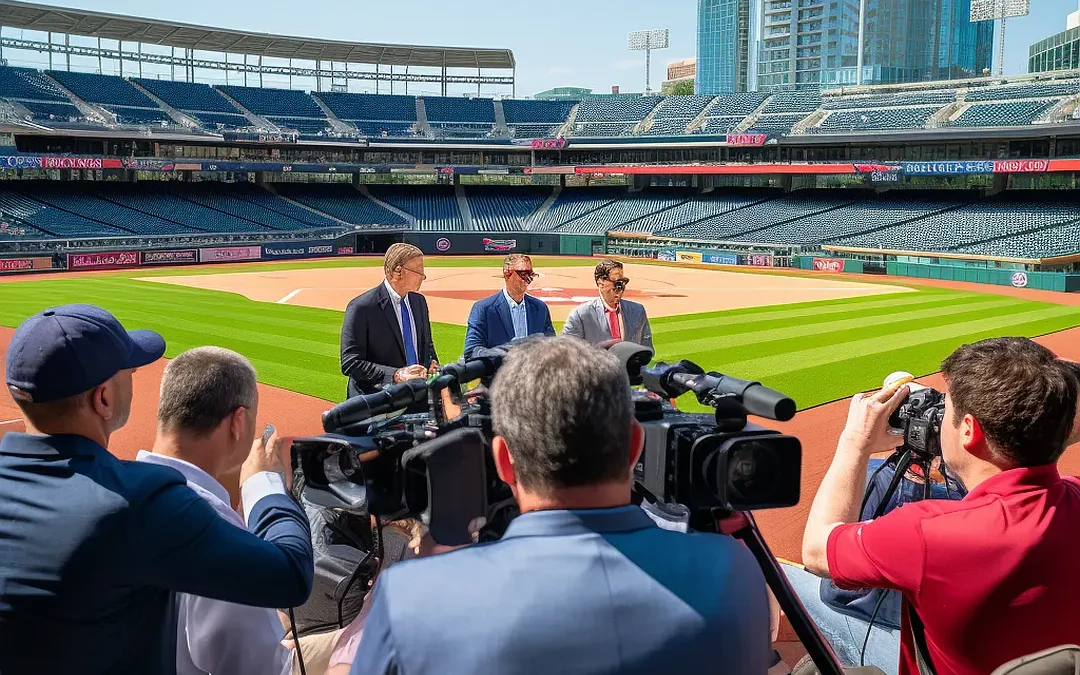Huddle In For The MLB Rules 2024
Welcome, baseball enthusiasts, to the electrifying world of MLB! As we gear up for the 2024 season, we can’t help but reflect on the game’s evolution and the impactful rule changes that promise to make this season even more thrilling than the last.
In 2023, Major League Baseball witnessed a remarkable reduction in game time, thanks to a series of strategic rule adjustments. As we delve into the changes slated for 2024, join us on this journey to understand the intricacies of what promises to be a game-changer for America’s favorite pastime.
Men's Texas Rangers Nike Royal 2023 World Series Pullover Hoodie
Please note that Huddlecourt and its content providers may receive compensation for some links to products and services featured on this website. Rest assured that we have handpicked these products to provide you with the best options available.
The Pace of Play Revolution
The 2023 season marked a turning point for MLB, with nine-inning games averaging a swift 2 hours and 39 minutes. This nearly 25-minute reduction from the previous year brought the game’s pace to its shortest since 1985 (2:40). The resounding success fueled the anticipation for what the 2024 season has in store.
Behind the Scenes with the Competition Committee
The architects of MLB’s rule changes operate within the esteemed Competition Committee. Comprising six owners, four players, and an umpire, this collective body plays a pivotal role in sculpting the rules that shape the game we love. It’s a collaborative effort that considers various perspectives to enhance the fan experience.
The Ticking Clock: Pitching Precision in 2024
One of the headline changes for the upcoming season revolves around the pitch clock. In 2023, we witnessed pitchers adapting to a 20-second timer. Fast forward to 2024, and the clock is ticking even faster, with a reduction to 18 seconds when runners are on base and maintaining a brisk 15 seconds with the bases empty.
Strategic Shifts: Mound Visits in the Spotlight
Strategic decisions on the pitcher’s mound play a crucial role in the flow of the game. The Competition Committee has opted to trim the number of mound visits per team from five to four, a move aimed at preserving the dynamic nature of the game. Dive into the details as we explore how this adjustment aligns with fan preferences and enhances the overall viewing experience.
The Express Lane to First Base
Let’s shift our focus to the runner’s lane, a domain that’s about to get broader in 2024. The expansion now includes the space between the foul line and the infield grass. This alteration, while seemingly subtle, allows batters to take a more direct path to first base, promising both efficiency and protection from interference.
Beyond Warm-Ups: Pitcher Requirements Redefined
It’s not just about warming up anymore. A significant change awaits pitchers who take the mound between innings — they must now face at least one batter. This alteration, prompted by 24 instances in the 2023 season where pitchers warmed up but never threw a pitch, aims to eliminate dead time and keep the action flowing seamlessly.
A Constructive Conversation: Fan Feedback and Player Safety
MLBPA director Tony Clark echoes the sentiment that immediate additional changes are unnecessary. Instead, the focus is on gathering data to fully examine the health, safety, and injury impacts of reduced recovery time. It’s a commitment to ensuring that the changes made contribute meaningfully to the game’s evolution.
More Baseball Content on Huddlecourt
Click here to read more and discover why MLB is taking the world by storm. Let the excitement begin!
The Evolution Continues: Pitch Clock Strategies
Let’s delve deeper into the pitch clock adjustments for the 2024 season. With a reduced time frame of 18 seconds when runners are on base, pitchers face a heightened challenge in maintaining their precision. A closer look at the 2023 data reveals that pitchers started their deliveries with an average of 7.3 seconds remaining on the 20-second timer. As the clock restarts after a “dead ball,” pitchers are expected to adapt to a more dynamic and fast-paced environment, adding a strategic layer to their game.
Right-Handed Advantage: The Runner’s Lane Expansion
One of the most talked-about changes for the upcoming season is the widening of the runner’s lane. For right-handed batters, this alteration provides a direct path to first base, eliminating the previous requirement to stay within the 3-foot box on the foul side of the base line. This fundamental shift aligns with the league’s commitment to improving pace and could potentially lead to a modest improvement in batting average on infield ground balls. It’s a game-changer that has both players and fans buzzing with anticipation.
Strategic Adjustments: Pitching Changes in Focus
Building on the success of the 2023 changes, the 2024 season introduces additional modifications to further enhance the pacing of the game. The pitch clock, now set at 18 seconds with runners on base, will also restart after a “dead ball.” This tweak eliminates the pitcher’s ability to delay the start of the clock by walking around the edge of the mound, ensuring a more consistent and dynamic flow of play. As we analyze the month-by-month data on average game time, it becomes clear that these adjustments aim to recapture some of the lost time by September 2023, providing fans with a more engaging and streamlined baseball experience.
New rule changes coming to MLB in 2024! https://t.co/cVDCY1s6a0
— Referee Magazine (@RefereeMag) December 21, 2023
Reinventing Mound Visits for Fan Enjoyment
Among the adjustments to mound visits, the reduction from five to four per game stands out. This change is not just about limiting interruptions but also about enhancing fan enjoyment. In 2023, clubs averaged only 2.3 mound visits per game, and surveys indicate that these events are among fans’ least favorite in baseball. The extra mound visit awarded in the ninth inning, if the defensive team has zero remaining at the end of the eighth, adds a strategic element to late-game scenarios. Additionally, the introduction of the ability for defensive players to signal for a mound visit without actually visiting the mound addresses situations where teams use visits to buy time between pitches, aligning with the league’s commitment to improving pace without compromising strategic depth.
Adapting to Change: Circumvention and Batter-Faced Rules
As we explore the finer details of the 2024 rule changes, attention shifts to circumvention and the batter-faced requirement. The pitch clock operator, now known as the Field Timing Coordinator, will restart the clock after a dead ball, removing the pitcher’s ability to delay by walking around the edge of the mound. In tandem with the three-batter minimum rule, a pitcher sent to warm up for an inning must face at least one batter. This addresses instances from the 2023 season where a pitcher warmed up between innings and was replaced before throwing a pitch, contributing approximately three minutes of dead time per event. The cumulative impact of these changes showcases the league’s commitment to a faster-paced and more engaging baseball experience.
Looking Ahead to a Dynamic 2024 Season
As we conclude this exploration of the MLB rule changes for the 2024 season, the intricate tapestry of adjustments reveals a league dedicated to evolution. From pitch clock strategies to batter-faced requirements, each modification is a thread woven into the fabric of a faster, more dynamic game. We stand on the brink of a thrilling season, where tradition meets innovation, and the spirit of baseball continues to capture our hearts.
We invite you, our passionate community of baseball aficionados, to share your perspectives on these rule changes. Join the conversation on social media using #MLB2024Insights and stay connected for in-depth coverage and real-time analysis as the 2024 season unfolds. Your insights fuel the dialogue that makes baseball more than a sport—it’s a shared experience that unites fans across the globe.








